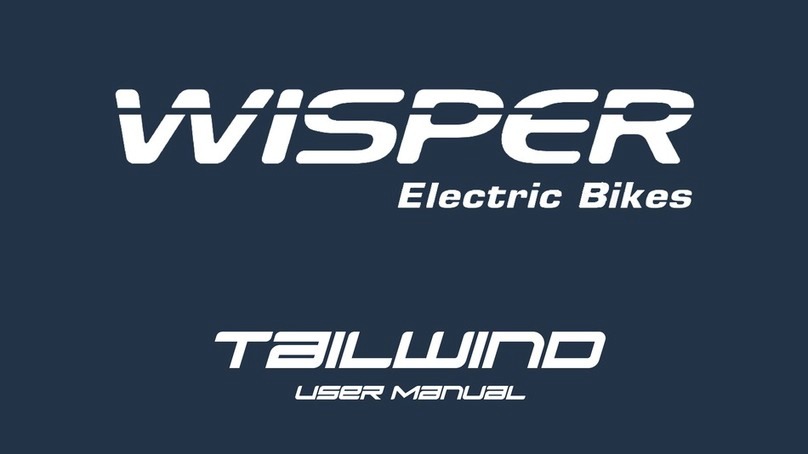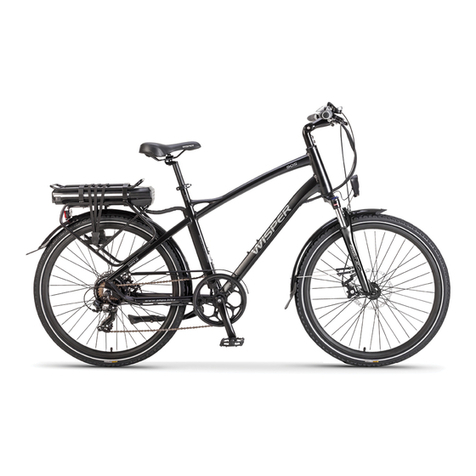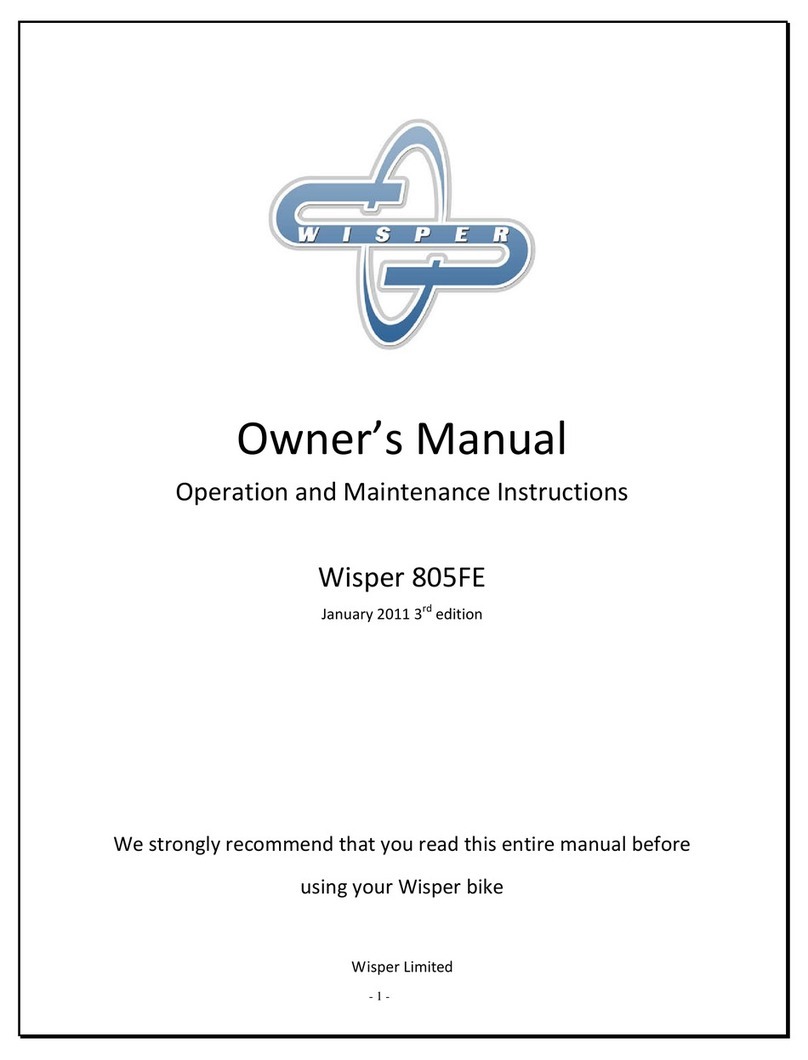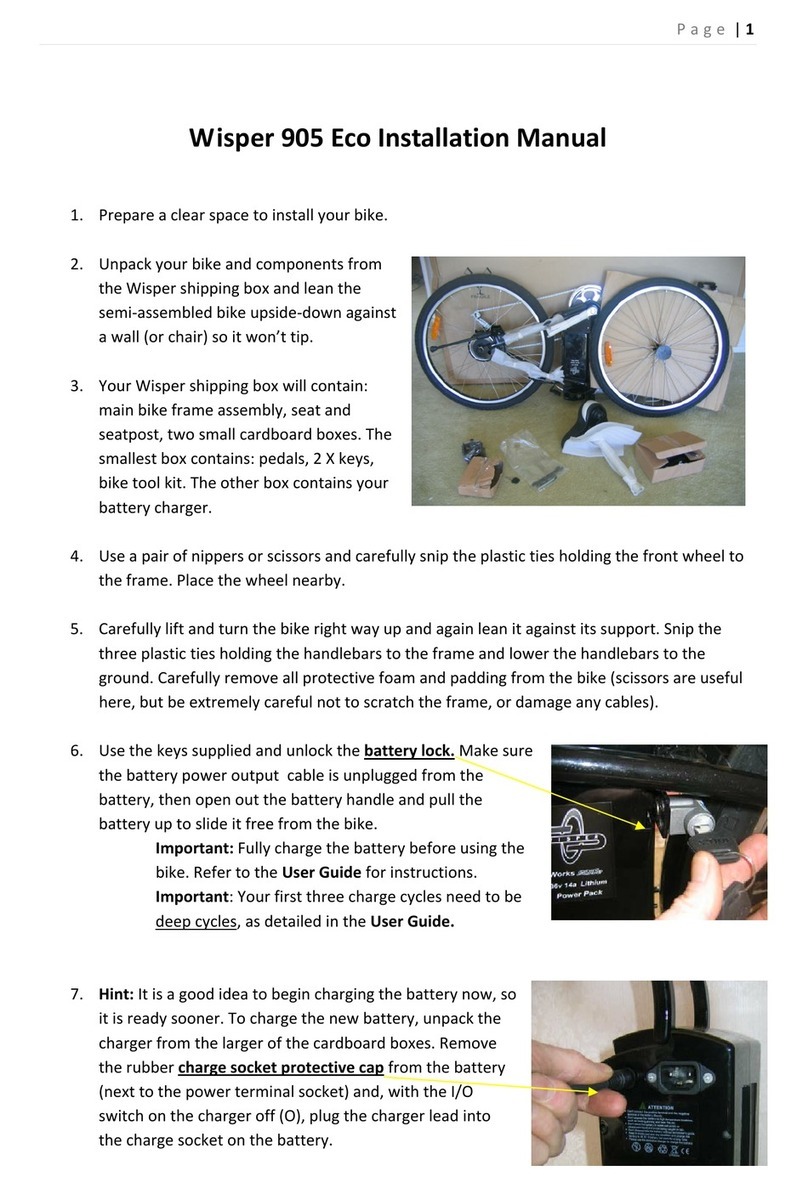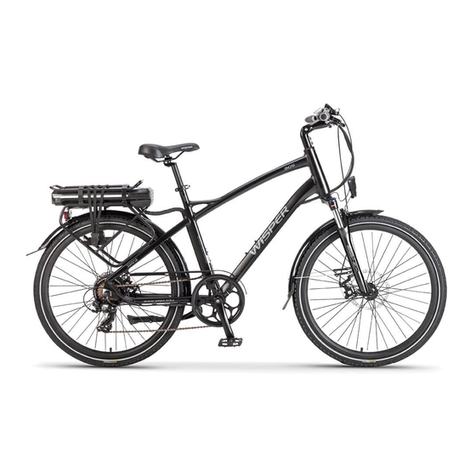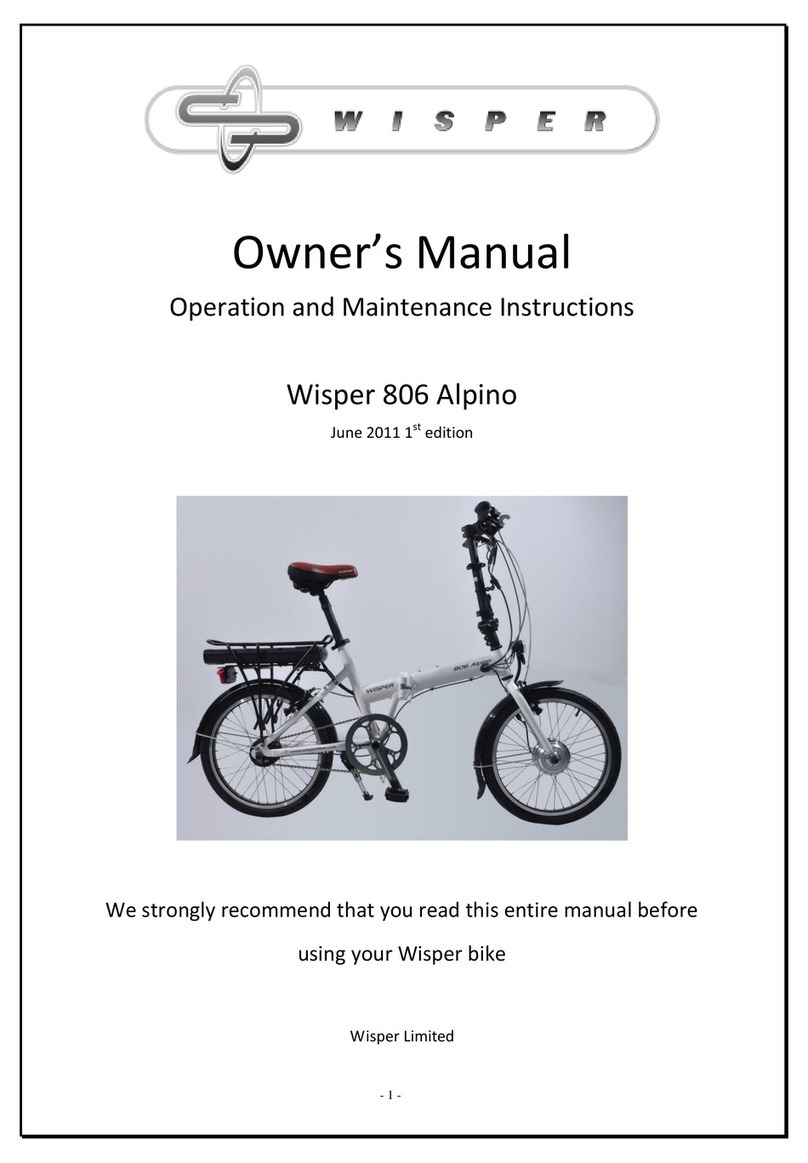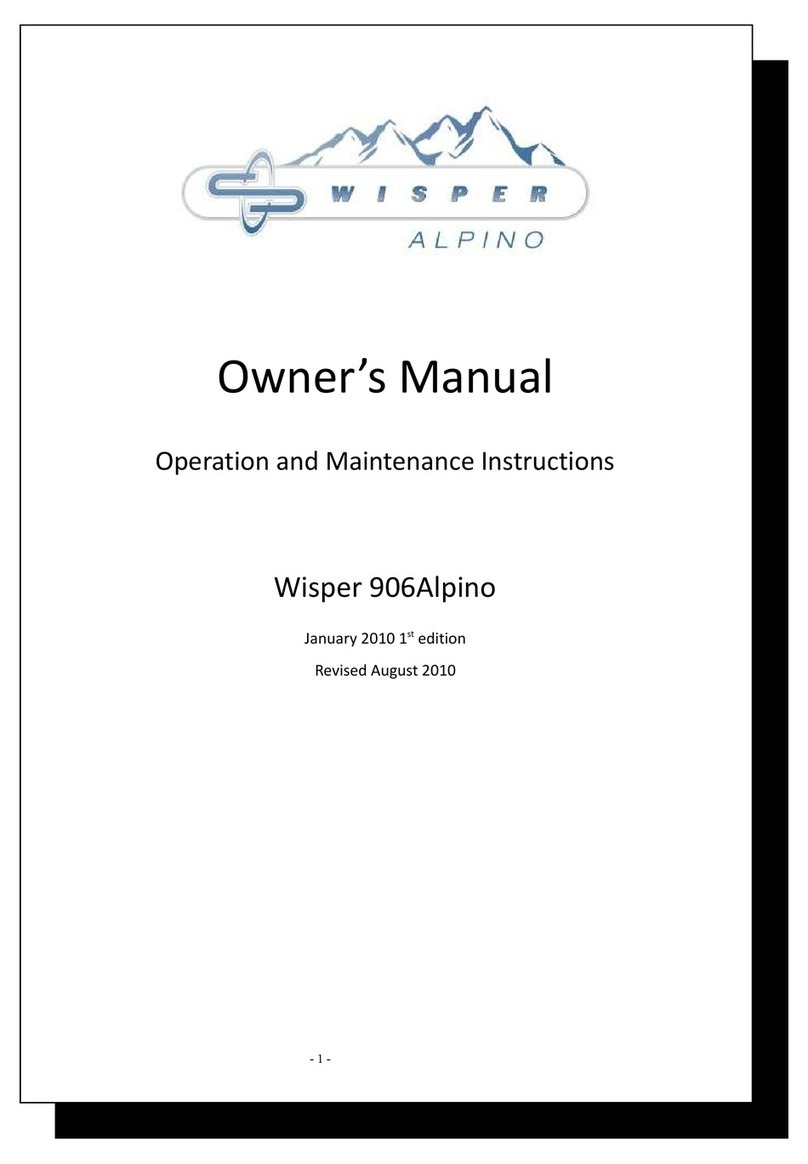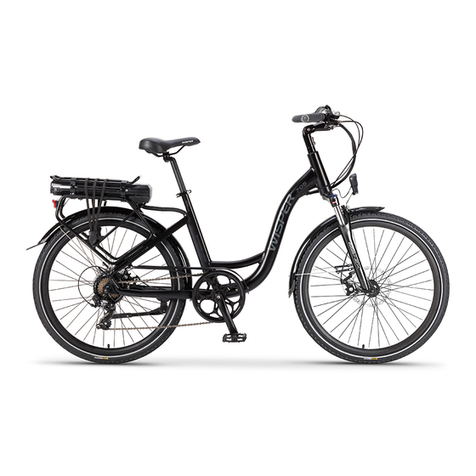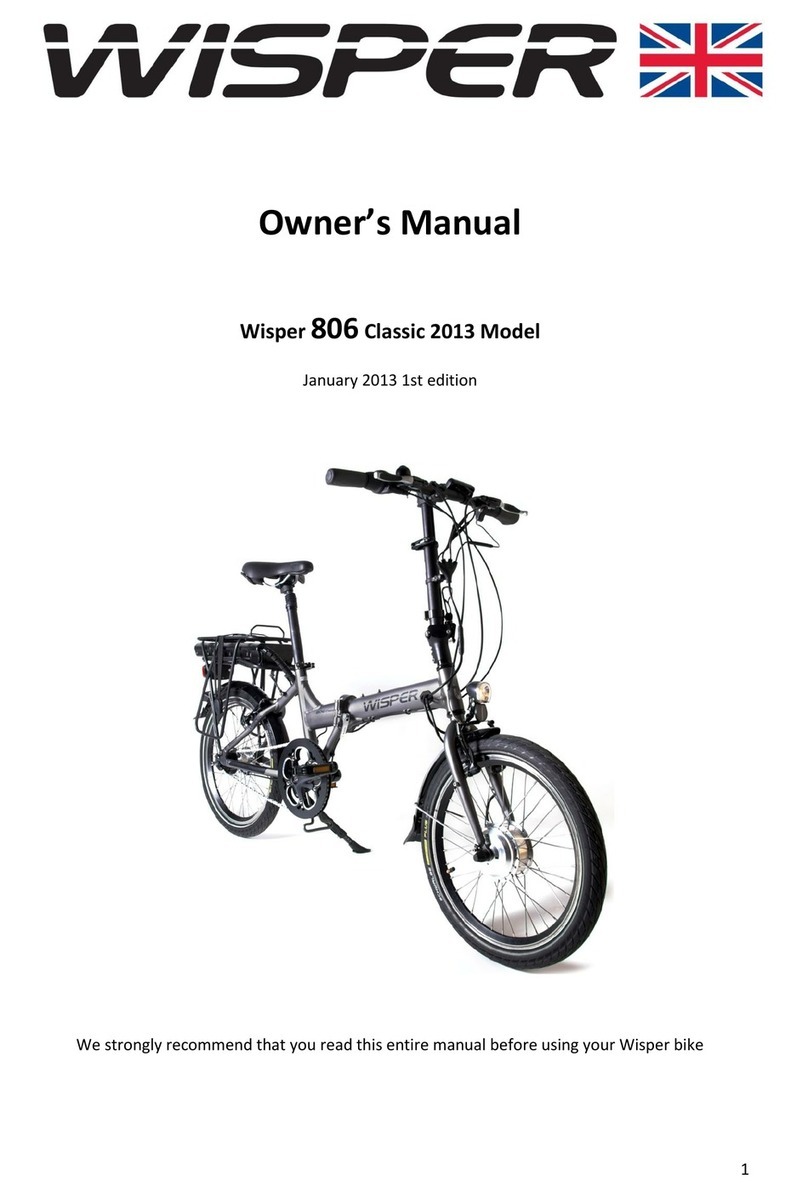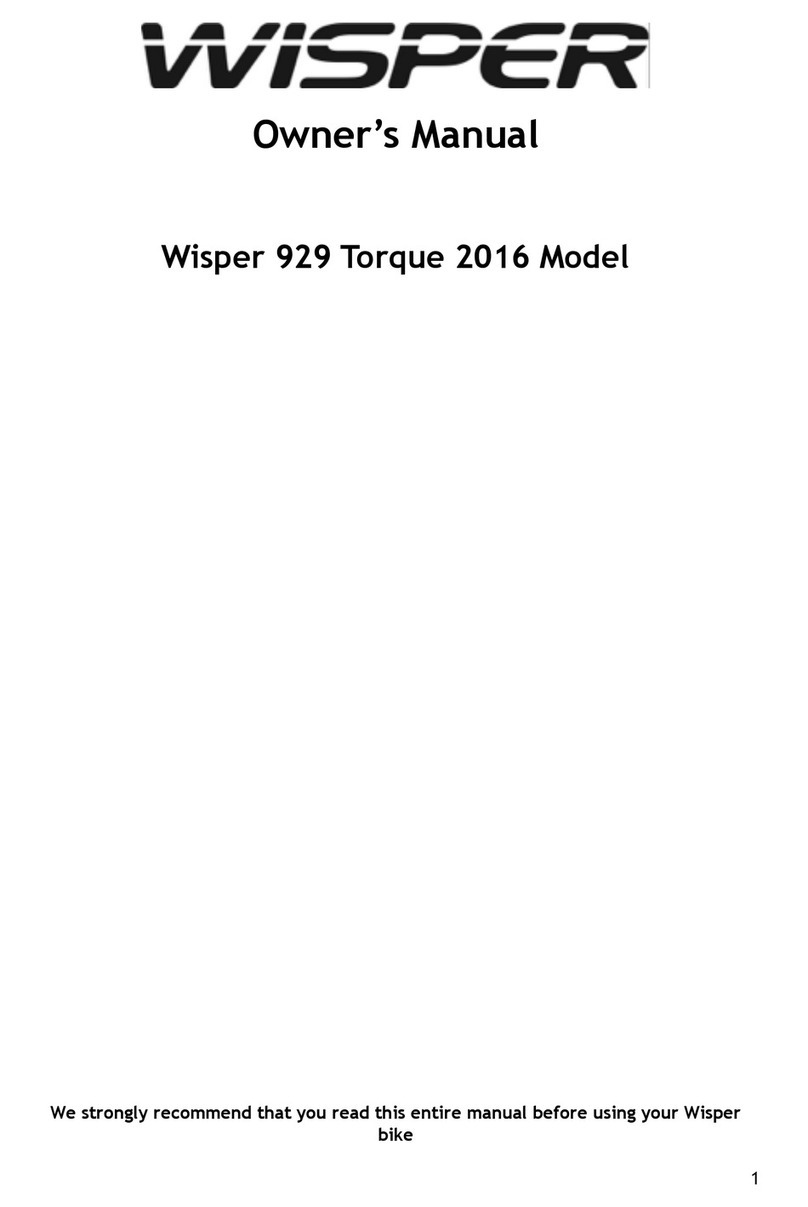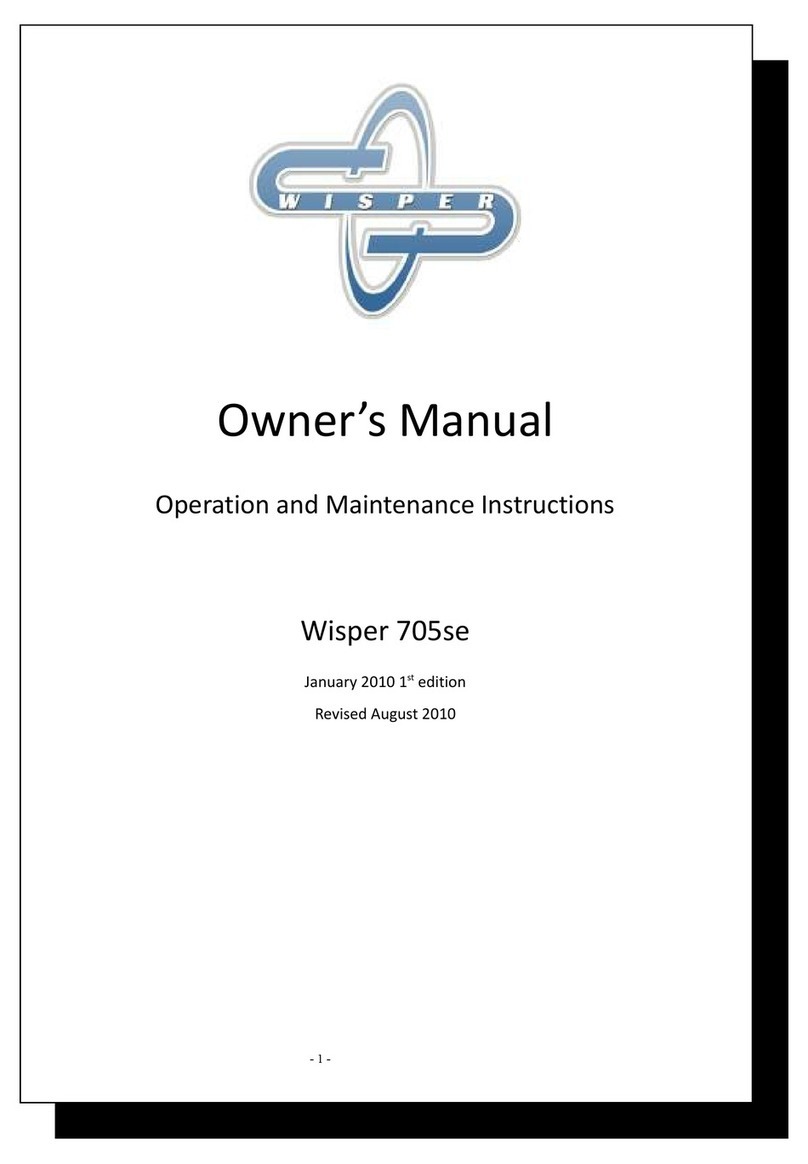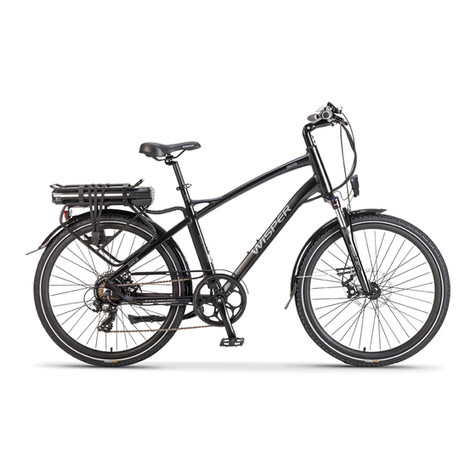
- 7 -
discharging to about 3 of 4 green lights showing before recharging. After this
“conditioning” process you can then charge and discharge the battery as and when
you require, although we recommend keeping it topped up.
3.2 A lithium ion battery will slowly discharge over time as it sits in storage. If a
battery is allowed to fully discharge, this will stress the cells in the battery and
reduce the capacity and life of the battery. During normal riding, the Wisper
batteries have a battery management system (BMS) which switches off the
electrical system when the voltage drops to a certain point i.e. the battery is not
allowed to fully discharge and the cells are protected. However, the BMS will not
prevent a battery from slowly discharging as it sits in storage. Therefore, it is
important to ensure that your battery retains some charge over the winter months.
Unfortunately, it is also not ideal to put your battery in storage with 100% charge as
this can put some stress on the cells. The following actions are therefore
recommended for battery care:
Store your battery with a partial charge, ideally 40-80%. While charging, you
can check the number of green lights on the battery indicator (with the key
switched on) … aim for two-three lights (four lights is fully charged). Another
way of checking that the battery hasn’t reached full charge, is that the amber
light on the charger is still on and you can hear the charger fan operating;
Depending on how fully charged the battery was initially, it will normally take
about 1-2 hours to give the recommended partial charge;
If you end up charging your battery to 100% (the green light on the charging
unit comes on), go for a ride to discharge it partially before storing the battery;
Check your battery every couple of months of storage and give it a top up if the
battery indicator has dropped to one light;
Ideally, the battery should be stored in a cool place. Significantly elevated
temperatures over prolonged periods can reduce battery capacity. Also avoid
freezing the battery.
3.3 Before setting off on any journey it is always better to have a fully charged battery
3.4 Always remember that you use up to three times more power when setting off
under the twist throttle. To preserve the life of each charge always set off using
pedal assist.
3.5 Do not expose the bicycle or battery pack to fire, heat sources, acid or alkaline
substances.
3.6 When leaving your bicycle during hot weather always leave in a shaded well
ventilated area.
3.7 For best results always recharge the battery at room temperature.
3.8 Before unloading the battery make sure it is turned off at the key, then raise the
saddle and unload the battery using its handle.
3.9 If your battery is damaged or appears to be overheating for any reason immediately
return it to your retailer for advice and a safety check.
